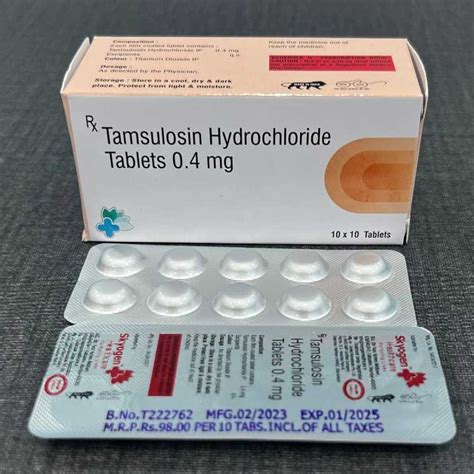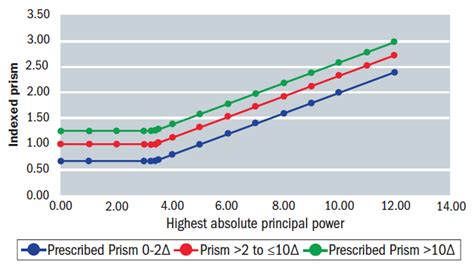Intro
Discover what Tamsulosin is, a medication for benign prostatic hyperplasia, and learn about its uses, side effects, and interactions, including alpha-blocker properties and urinary retention relief.
Tamsulosin is a medication that has been widely used to treat a variety of conditions, particularly those related to the urinary system. It is an alpha-blocker, which means it works by relaxing the muscles in the prostate and bladder neck, making it easier to urinate. This medication has been a significant development in the treatment of urinary issues, offering relief to millions of people worldwide. The importance of understanding how tamsulosin works, its benefits, and potential side effects cannot be overstated, as it directly impacts the quality of life for individuals dealing with urinary problems.
The prevalence of urinary issues, such as benign prostatic hyperplasia (BPH), has made medications like tamsulosin crucial in modern healthcare. BPH, a condition where the prostate gland is enlarged, can cause a range of symptoms including difficulty starting to urinate, weak urine flow, frequent urination, and the need to urinate multiple times during the night. Tamsulosin helps alleviate these symptoms by reducing the resistance in the muscles of the prostate and bladder neck, thereby facilitating a smoother flow of urine. This not only improves the patient's comfort but also reduces the risk of complications associated with untreated urinary retention.
Understanding the mechanism of action of tamsulosin is essential for appreciating its efficacy. By selectively blocking alpha-1 adrenergic receptors, tamsulosin relaxes the smooth muscles in the prostate and bladder neck. This selective action minimizes the impact on blood pressure, which is a significant advantage over non-selective alpha-blockers. The result is an improvement in urine flow and a reduction in symptoms associated with BPH. Moreover, the pharmacokinetics of tamsulosin, including its absorption, distribution, metabolism, and excretion, play a critical role in its effectiveness and safety profile.
How Tamsulosin Works

Tamsulosin's working mechanism is rooted in its ability to interact with alpha-1 adrenergic receptors. These receptors are found in the smooth muscle of the prostate and bladder neck. By blocking these receptors, tamsulosin reduces the contraction of these muscles, thereby easing the flow of urine. This action is highly specific, which means that tamsulosin has a minimal effect on other types of alpha receptors, reducing the risk of side effects such as hypotension, which is often seen with less selective alpha-blockers.
Benefits of Tamsulosin
The benefits of tamsulosin are multifaceted, offering significant relief from the symptoms of BPH and improving the overall quality of life for patients. Some of the key benefits include: - Improved urine flow: By reducing the resistance in the prostate and bladder neck, tamsulosin facilitates a stronger and more consistent urine flow. - Reduced frequency of urination: Patients often experience a decrease in the need to urinate frequently, both during the day and at night. - Enhanced patient comfort: The reduction in urinary symptoms leads to increased comfort and reduced discomfort or pain associated with urination. - Minimal impact on blood pressure: Due to its selective action, tamsulosin does not significantly lower blood pressure, making it a safer option for patients with certain cardiovascular conditions.Side Effects and Precautions

While tamsulosin is generally well-tolerated, like all medications, it can cause side effects. Common side effects include dizziness, headache, and ejaculation disorders. Rare but more serious side effects can include hypotension (low blood pressure), particularly when standing up from a sitting or lying down position, and a condition known as floppy iris syndrome during cataract surgery. It is crucial for patients to discuss their medical history, including any previous surgeries, and all medications they are currently taking with their healthcare provider before starting tamsulosin.
Precautions and Interactions
Given the potential for interactions and side effects, certain precautions must be taken: - **Medication Interactions:** Tamsulosin can interact with other medications, including phosphodiesterase-5 inhibitors (used for erectile dysfunction), and certain antifungals and antihistamines. - **Surgical Considerations:** Patients should inform their ophthalmologist if they are taking tamsulosin before undergoing cataract surgery due to the risk of floppy iris syndrome. - **Hypotension:** Patients should be cautious when changing positions to avoid dizziness and falls.Dosage and Administration

Tamsulosin is typically administered orally, once daily, approximately 30 minutes after a meal. The standard dose for BPH is 0.4 mg, but this can be adjusted based on individual patient response and tolerance. It is essential to follow the prescribed dosage and administration instructions to maximize efficacy and minimize side effects.
Special Considerations
Special considerations are necessary for certain patient populations: - **Renal Impairment:** Patients with kidney problems may require dose adjustments. - **Hepatic Impairment:** Those with liver problems should be monitored closely due to the potential for increased drug levels. - **Pediatric and Geriatric Use:** Tamsulosin is not approved for use in children, and caution is advised when prescribing it to elderly patients due to the potential for increased sensitivity to side effects.Alternatives and Comparisons

While tamsulosin is a widely used and effective medication, other treatment options are available for BPH and urinary issues. These include other alpha-blockers, 5-alpha-reductase inhibitors, and phosphodiesterase-5 inhibitors. The choice of medication depends on the patient's specific symptoms, medical history, and potential side effects. Comparing these alternatives involves considering their mechanisms of action, efficacy, safety profiles, and patient preferences.
Future Directions
Research into new treatments for BPH and urinary issues continues, with a focus on improving efficacy, reducing side effects, and developing more targeted therapies. Advances in pharmacology and a better understanding of the pathophysiology of BPH will likely lead to the development of new medications and treatment strategies.Conclusion and Next Steps

In conclusion, tamsulosin is a valuable medication for the treatment of urinary issues, particularly BPH. Its effectiveness in improving urine flow and reducing symptoms has made it a cornerstone in the management of these conditions. However, like all medications, it must be used judiciously, with consideration of potential side effects and interactions. As research continues to advance our understanding of urinary disorders and their treatments, patients and healthcare providers must work together to find the most appropriate and effective treatment strategies.
We invite you to share your thoughts and experiences with tamsulosin or other treatments for urinary issues. Your insights can help others understand the complexities of these conditions and the importance of seeking medical advice. Please comment below, and let's continue the conversation about how we can improve the management and treatment of urinary problems.
What is the primary use of tamsulosin?
+Tamsulosin is primarily used to treat the symptoms of benign prostatic hyperplasia (BPH), a condition in which the prostate gland is enlarged and can cause urinary problems.
How does tamsulosin work?
+Tamsulosin works by relaxing the muscles in the prostate and the bladder neck, making it easier to urinate. It does this by blocking the alpha-1 adrenergic receptors, which are responsible for the contraction of these muscles.
What are the common side effects of tamsulosin?
+Common side effects of tamsulosin include dizziness, headache, and ejaculation disorders. Less common but more serious side effects can include hypotension and a condition known as floppy iris syndrome during cataract surgery.
